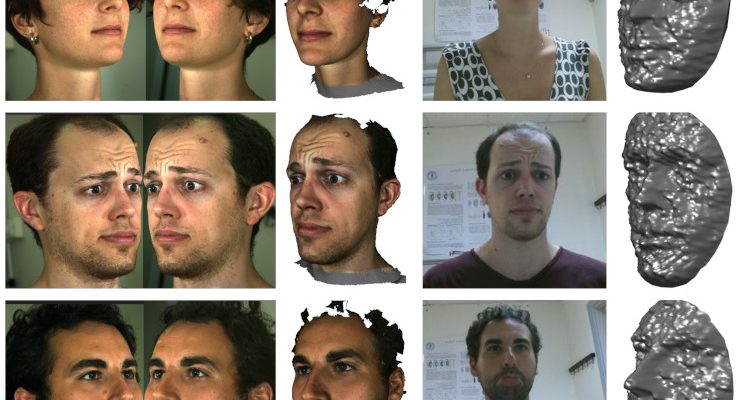Details
We propose a new 3D face dataset, named Florence Multi-Resolution 3D Facial Expression (Florence 3DMRE), which aims at bridging the gap between high- and low-resolution 3D face datasets. Its peculiarity consists in (1) including high-resolution (HR) models obtained with a HR scanner, and paired samples collected with a Kinect sensor, (2) LR and HR scans are synchronized and capture extreme and asymmetric facial deformations as used in facial rehabilitation exercises. In total, our dataset consists of 14 subjects, each performing 19 complex and asymmetric expressions. For each of them, we collected a high-resolution scan, and an RGB-D sequence. Finally, to highlight the value of the dataset and the challenges it introduces, we use the collected data to perform baseline experiments for cross-resolution 3D face recognition and reconstruction. The dataset is released for research purposes only, and complies to the EU General Data Protection Regulation (GDPR) for data treatment.
Please, if you use the dataset cite our papers as follows:
@article{ferrari_prl_2023,
author = “C. Ferrari and S. Berretti and P. Pala and A. {Del Bimbo}”,
title = “The Florence multi-resolution 3D facial expression dataset”,
journal = “Pattern Recognition Letters”,
year = “2023”,
volume = “online”,
month = “October”,
doi = {https://doi.org/10.1016/j.patrec.2023.09.015}
}
